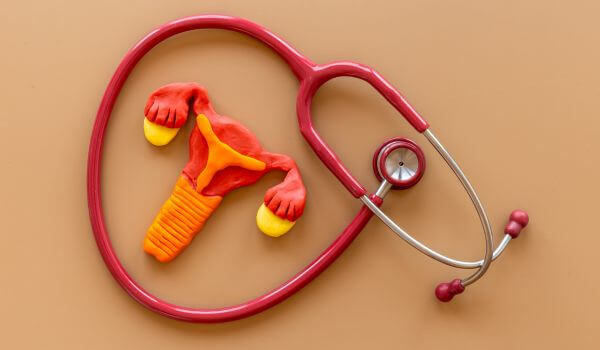
The dangers of thrombosis from blood clots are that when a clot forms inside the veins and arteries, it could dislodge and travel downstream to other parts of the body, leading to life-threatening events. Pulmonary embolism, heart attack, or stroke become real dangers to the lungs, heart, and brain, respectively, from blood clots.
Blood clotting is a normal and essential part of the body’s response to injury. It’s essential that clotting happens when tissue enriched with blood is exposed to air due to a cut or tear. Red platelets, proteins, and other components in the blood stick together to form a solid lump stopping further blood loss and allowing the tissue underneath it to heal. But sometimes clots form inside blood vessels without any injury and can continue growing. This is called a thrombus.
Thrombosis is the term used to describe the condition that occurs when a thrombus forms inside a blood vessel. Two things can then follow. In one case, the clot can grow until it blocks the flow of blood, which starves the organs fed by that artery of oxygen or nutrients. Alternatively, a part of the clot may detach, and then it travels downstream from the blood vessel and creates a block further down. This is called an embolism.
Many things can lead to a thrombus being formed, including injury, genetics, medical conditions, and lifestyle factors such as smoking, diet, obesity, and a sedentary lifestyle. Preventing a thrombus from causing an embolism requires specific treatment. Read some more about the current options here. One of the most frequently prescribed medications is Eliquis, used as an anticoagulant for the treatment of venous thromboembolic events, to help to reduce the extent of blood clotting, and for the treatment or prevention of strokes or systemic embolisms.
What are the leading causes of embolisms?
The term “embolism” refers to any general blockage of blood flow in an artery or vein, and not just to blood clots. Other blockages can occur, such as:
- Septic embolism – when bacteria or other infectious materials enter the bloodstream and forms lumps
- Fat embolism – when fat cells enter the bloodstream from the bone marrow
- Air embolism – when air bubbles enter the bloodstream during medical procedures, especially surgery or injections
- Diver’s bends – when deep-sea divers surface too quickly from great depth. The dissolved nitrogen in their blood can suddenly form bubbles in the tissues and bloodstream.
What happens when a pulmonary embolism occurs?
A pulmonary embolism (PE) occurs when a blood clot travels through the veins and lodges in the pulmonary arteries. These are the blood vessels that supply blood to the lungs. The blockage obstructs blood flow and prevents oxygen from reaching the rest of the body. Typical symptoms are shortness of breath and chest pain. Sometimes, the obstruction increases blood pressure which causes the heart to work much harder. PE can be fatal, especially if the clot is large or multiple clots have traveled into the lungs. There is also the risk that one or more lobes of the lungs could die from lack of oxygen, in which case a lung transplant may be necessary. PE is the third-highest cause of cardiovascular death in the US. Pulmonary embolism can lead to pulmonary hypertension and ultimately lead to heart failure.
According to the American Lung Association’s website, about 900,000 people in the US are diagnosed with a pulmonary embolism every year, and the mortality rate for untreated patients is about 30% in the first year alone. On the other hand, patients who receive proper treatment have a better than nine-in-ten chance of survival in the first year.
Deep Vein Thrombosis (DVT) is the most common cause of pulmonary embolism. Blood clots in the legs travel to the lungs and cause a blockage. DVTs can sometimes dissolve on their own, but doctors will prescribe simple medication such as blood thinners if there are any signs that a DVT may be present.
Some more information about the ways doctors approach limiting the dangers of DVT and atrial fibrillation is posted here.
Can a heart attack come from a thrombosis?
Blood clotting plays a significant role in heart attacks, termed myocardial infarction (MI). Plaques can build up on the linings of the heart’s arteries, produced by layers of cholesterol, fibrous tissue, and inflammatory cells. This is called atherosclerosis. It gradually narrows the coronary arteries. The plaques can become unstable and break off the walls of the arteries, triggering a blood clot further down where the width of the artery has narrowed. This may block the coronary artery entirely and deprive the heart muscle of nutrients and oxygen, resulting in a heart attack. Smoking, high cholesterol, and diabetes are contributory risk factors for atherosclerosis.
Can a deep vein thrombosis lead to a stroke, heart attack or embolism?
In deep vein thrombosis (DVT), blood clots develop in veins in the leg or pelvis. Suppose a portion of the clot breaks off. In that case, it can travel through the veins and eventually reach the lung’s pulmonary arteries, becoming a pulmonary embolism (PE). There are lower chances of a heart attack or stroke from a DVT because those events come from arterial blockages, so there is no direct route for the clot other than through the lungs.
FAQ
Which comes first, thrombosis or atrial fibrillation?
Atrial fibrillation (AFib) and thrombosis are related medical conditions; each can cause or result from the other. Atrial fibrillation is a type of irregular heartbeat. The upper chambers of the heart (the atria) receive incoming blood. In AFib, they beat irregularly and are out of sync with the lower chambers, whose job is to pump it back into the body. This can cause blood to pool in the upper chambers, where it may form clots. These clots may then travel through the bloodstream and cause thrombosis.
On the other hand, thrombosis in other parts of the body can cause damage to the walls of blood vessels. It can trigger an inflammatory response. This inflammation can then lead to the development of AFib in sensitive individuals.
What are the warning signs of a pulmonary embolism? What does it feel like to have a pulmonary embolism?
The first signs of pulmonary embolism usually appear very suddenly. Sometimes, it is confused with a heart attack and needs to be investigated immediately. The most common symptoms are shortness of breath, chest pain and fainting. The degree depends on the size of the thrombosis. The breathing problems worsen with physical activity and may persist even when resting. The chest pain may get worse as you try to catch your breath. Fainting (called syncope) happens because the heart rate and blood pressure drop suddenly.
What are the symptoms of deep vein thrombosis?
Not everyone with a deep vein thrombosis (DVT) has any symptoms, but if they do occur, they can include pain, tenderness and swelling in the calf or thigh, usually only in one leg.
Is Deep vein thrombosis recurrent during pregnancy?
DVT has a different label when it is diagnosed in pregnant women. In these cases, it is called venous thromboembolism (VTE). There is an increased risk of VTE in pregnancy, coming from changes in the blood’s clotting patterns (coagulability) that have probably evolved to protect women from bleeding dangers from miscarriage and during childbirth. It can begin during the first trimester of pregnancy and last throughout the term of pregnancy. There is also a pattern of recurrent DVT during pregnancy. If a woman experiences a DVT in an earlier pregnancy, there is more chance it will reoccur either in a later pregnancy or as she ages.
What is the cause of atrial fibrillation? Is atrial fibrillation an emergency?
Atrial fibrillation is also known as atrial flutter. It is an abnormal heart rhythm (arrhythmia). It occurs when the heart’s upper chambers (atria) pump very rapidly, and the synchronization of beats between the upper chambers and lower chambers is lost.
During atrial flutter, the atria can beat with up to 300 contractions per minute, compared to a normal pulse rate of 60 – 90 beats per minute at rest. Rapid contractions prevent the chambers from filling and emptying with each beat. It also results in the lower chambers beating much faster than usual.
There are several distinct causes of atrial fibrillation, one of which is a reaction to high blood pressure. Pulmonary embolisms often result in elevated blood pressure, and atrial flutter could result.
Any symptoms of atrial fibrillation must be treated as an emergency. Atrial fibrillation is life-threatening because it can cause a stroke or heart attack.
How is atrial flutter different from atrial fibrillation?
Atrial fibrillation and atrial flutter are terms describing similar conditions. When the term used is atrial fibrillation, the rhythm of the heartbeat is more disorganized than in atrial flutter. In both cases, there is a severe risk of life-threatening events such as stroke or heart attack, and treatment needs to be sought as a priority.
















